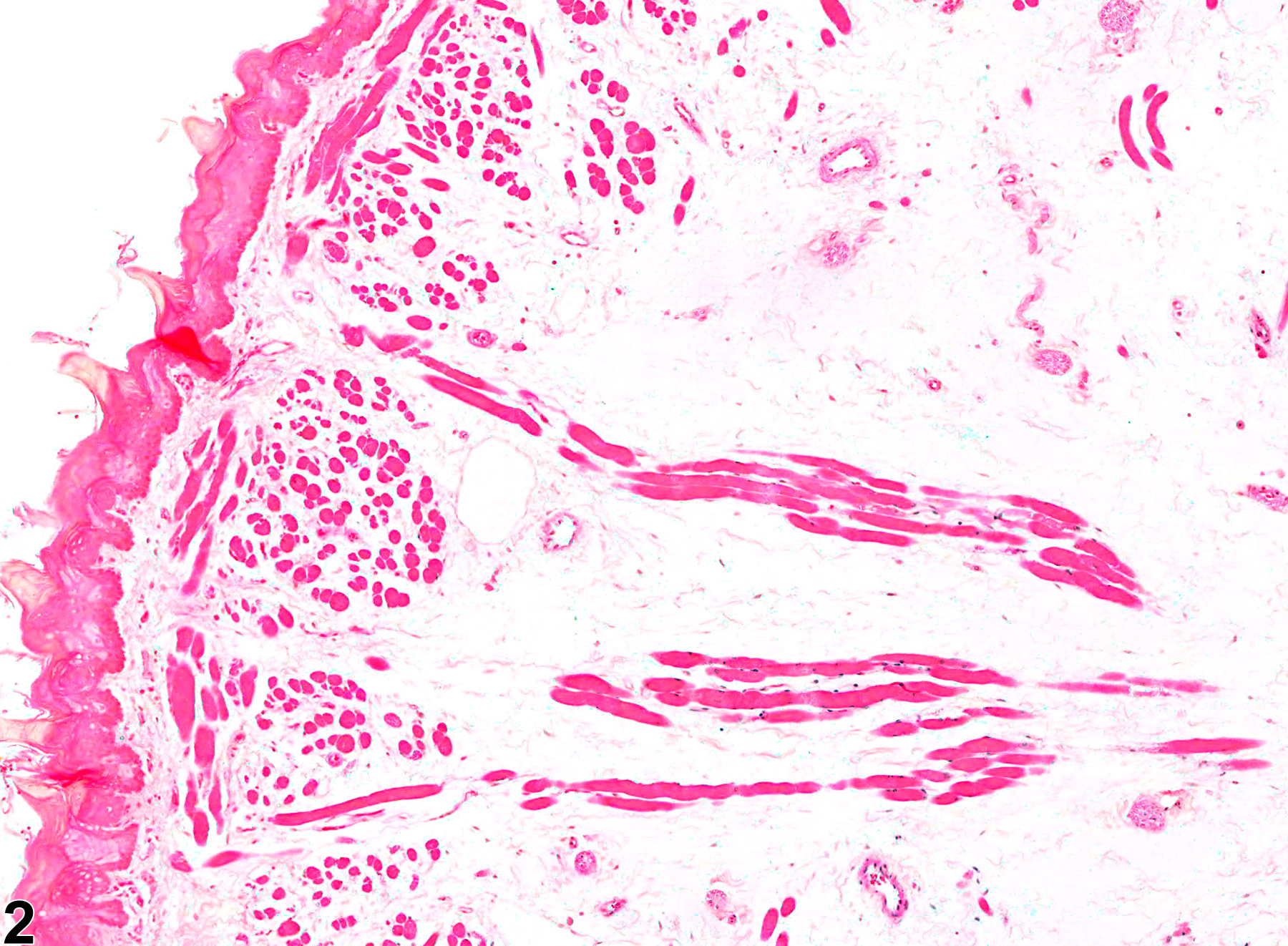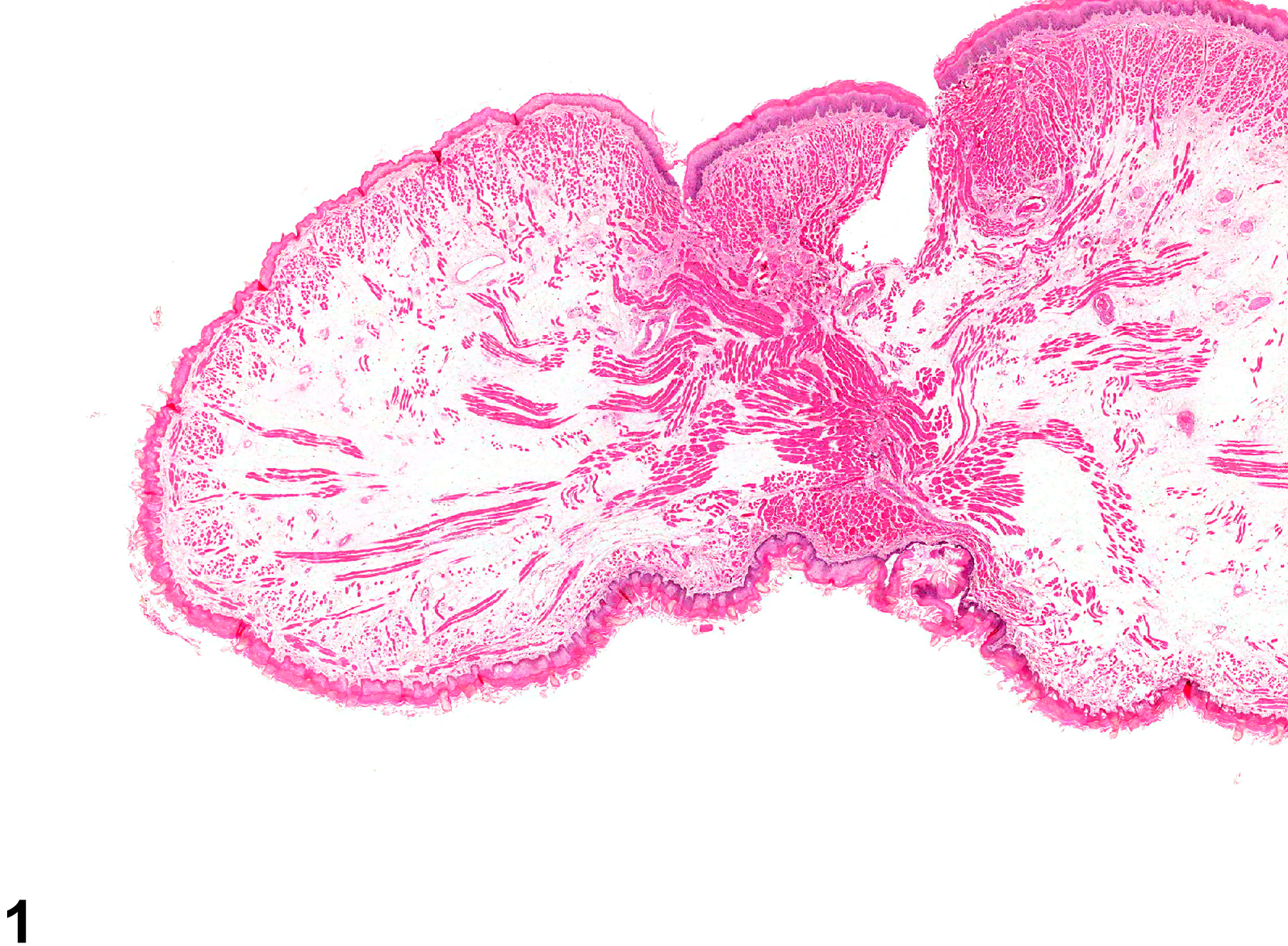Alimentary System
Tongue - Edema
Narrative
Mosier DA. 2007. Vascular disorders and thrombosis. In: Pathologic Basis of Veterinary Disease, 4th ed (McGavin MD, Zachary JF, eds). Mosby, St Louis, MO, 63-99.

Tongue - Edema in a male F344/N rat from a chronic study (higher magnification of Figure 1). The edema is accompanied by necrosis of the associated epithelium.



